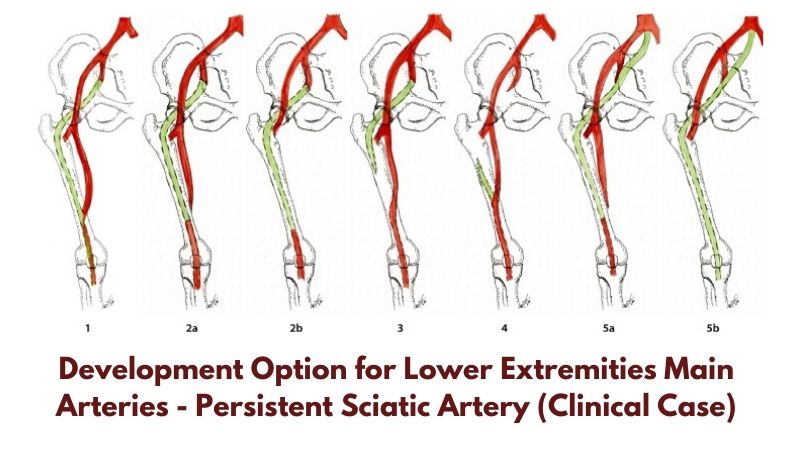
Persistent sciatic artery is a rare anatomical variant of the structure of the main arteries of the lower extremities. It is characterized by preservation of the embryonic sciatic artery with hypoplasia or absence of the external iliac and femoral arteries. At the age of up to 40 years, this feature of the body structure has almost no effect on the quality of life of most patients. Only a few seek medical help at a young age (under 20) with symptoms of intermittent claudication or soreness in the projection of the sciatic tubercles.
To determine the anatomical variants of the structure of the persistent sciatic artery and the peculiarities of the blood supply to the lower extremities with hypoplasia or the absence of the external iliac and femoral arteries.
49-year-old patient F. with a bilateral persistent sciatic artery with symptoms of intermittent claudication (CINC 2b), aneurysm of the left sciatic artery, occlusion of the left popliteal artery and arteries of the left leg.
Patient F. underwent a lumbar sympathectomy on the left to prepare the distal vascular bed for ischio-femoral-popliteal shunting in a planned manner. It is customary to distinguish 5 types of the anatomical structure of the persistent sciatic artery (according to W. Shaffer). The wall of this artery is more fragile than the iliac and femoral arteries, therefore, constant trauma, due to the vulnerable anatomical location, leads to premature atherosclerotic lesions and the formation of aneurysms along the vessel. Palpation of the pulsation points on the lower extremities in patients with a developed sciatic artery and hypoplasia of the iliac or femoral arteries shows a positive Cowie symptom: no pulsation in the projection of the common femoral artery in the inguinal fold with preserved pulsation at the popliteal artery pulsation point in the popliteal fossa. The altered topography of the deep veins of the lower extremities is often combined with a developed persistent sciatic artery.
Persistent sciatic artery is mainly found by chance on X-ray examination, rarely with manifestation of symptoms of intermittent claudication before the age of 40 years. The indications for surgical treatment and the choice of the type of arterial bed reconstruction primarily depend on the severity of ischemia of the lower extremities.
Category: General Info
Tags: medicine, persistent sciatic artery, treatment
© 2025 www.curesweatypalms.com. All rights reserved.